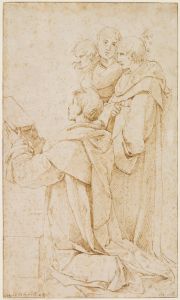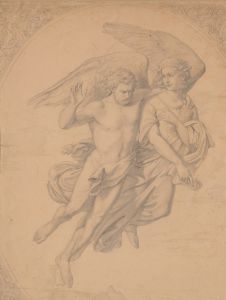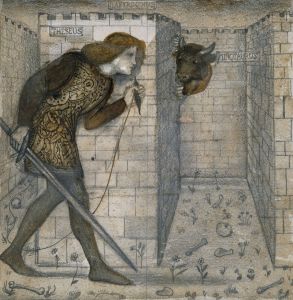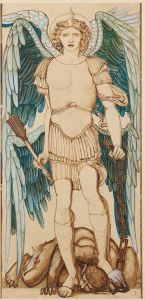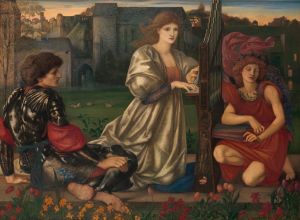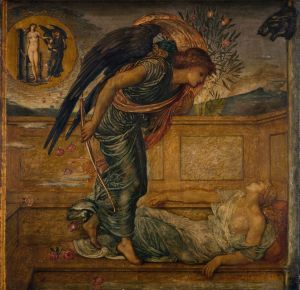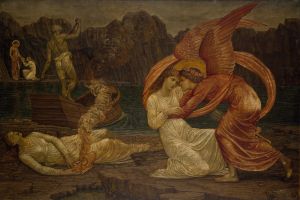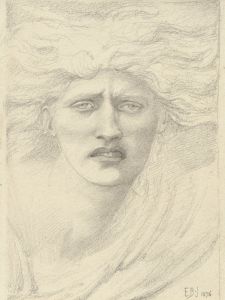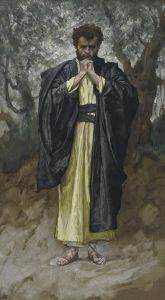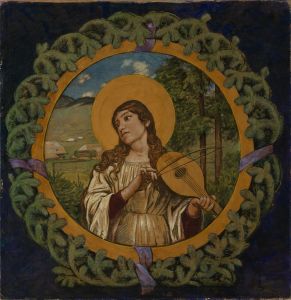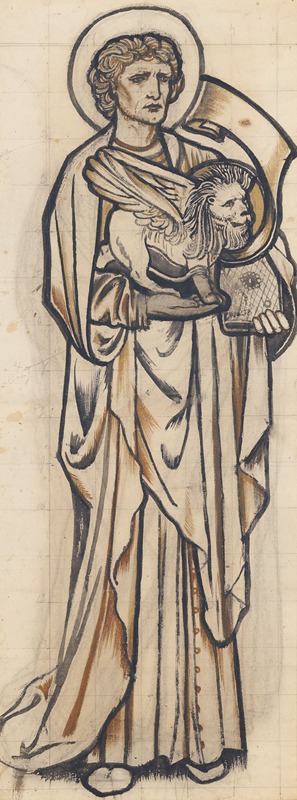
St Mark the Evangelist
A hand-painted replica of Sir Edward Coley Burne-Jones’s masterpiece St Mark the Evangelist, meticulously crafted by professional artists to capture the true essence of the original. Each piece is created with museum-quality canvas and rare mineral pigments, carefully painted by experienced artists with delicate brushstrokes and rich, layered colors to perfectly recreate the texture of the original artwork. Unlike machine-printed reproductions, this hand-painted version brings the painting to life, infused with the artist’s emotions and skill in every stroke. Whether for personal collection or home decoration, it instantly elevates the artistic atmosphere of any space.
Sir Edward Coley Burne-Jones was a prominent British artist and designer associated with the later phase of the Pre-Raphaelite movement. His work is characterized by its romantic style and often features themes drawn from mythology, literature, and religion. One of his notable works is "St Mark the Evangelist," which reflects his interest in religious subjects and his distinctive artistic style.
"St Mark the Evangelist" is a painting that depicts one of the four Evangelists, St. Mark, who is traditionally believed to be the author of the Gospel of Mark in the New Testament. Burne-Jones's portrayal of St. Mark is consistent with his other works, which often emphasize beauty, detail, and a sense of the ethereal. The painting likely features St. Mark with his traditional symbol, the winged lion, which is often used in Christian iconography to represent him.
Burne-Jones was known for his meticulous attention to detail and his ability to convey a sense of narrative through his art. In "St Mark the Evangelist," he would have employed his characteristic use of rich colors and intricate patterns, drawing the viewer into the scene and inviting them to contemplate the spiritual significance of the subject. The composition of the painting would be carefully balanced, with St. Mark positioned in a way that highlights his importance and his role as a messenger of the Christian faith.
The Pre-Raphaelite movement, with which Burne-Jones was associated, sought to return to the detail, intense colors, and complex compositions of Quattrocento Italian art. This movement was a reaction against the academic art standards of the time, which the Pre-Raphaelites felt lacked genuine emotion and depth. Burne-Jones, along with other members of the movement, aimed to create art that was not only visually striking but also imbued with meaning and emotion.
Burne-Jones's work, including "St Mark the Evangelist," often reflects his interest in medievalism and his desire to create art that was both beautiful and intellectually engaging. His paintings frequently draw on literary and historical sources, and he was known for his collaborations with other artists and designers, including William Morris, with whom he worked on various projects that combined art and craftsmanship.
While specific details about the creation and current location of "St Mark the Evangelist" are not widely documented, Burne-Jones's work remains highly regarded for its aesthetic qualities and its contribution to the Pre-Raphaelite movement. His paintings continue to be studied and appreciated for their beauty, their craftsmanship, and their ability to convey complex themes through visual art.
In summary, "St Mark the Evangelist" by Sir Edward Coley Burne-Jones exemplifies the artist's skill in combining religious themes with the romantic and detailed style characteristic of the Pre-Raphaelite movement. Through his use of color, composition, and symbolism, Burne-Jones creates a work that invites viewers to engage with the spiritual and artistic dimensions of the subject.





